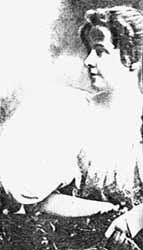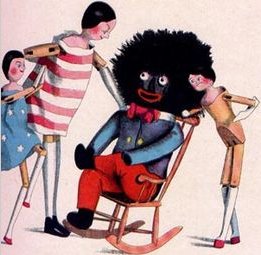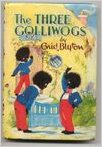
|
Golliwogg.co.uk |
Golliwogg.co.uk
|
|||||||||||||
|
In defence of Upton's Golliwogg... |
|||||||||||||
The origin of Golliwogg, as Florence herself said in an interview, "is passing simple. He was born of no deep, dark intentions, nor was he the product of a decadent craving for ugliness on the part of his creator. He simply walked quietly side by side with me out of my own childhood...Tracing him back to as near the beginning as I can get, he came from an American Fair. Farther we cannot go, and must fall back on the Topsy theory - 'he growed'." Florence's mother, Bertha Upton, wrote the verse text for the books, following the plot set by the illustrations. Florence then hand-lettered the text on separate pages and drew small figures around the margins.
The first book was tremendously successful and quickly went into additional printings. For the next fifteen years, Longmans published a new Upton book for children every December in time for the Christmas market. Golliwogg's adventures followed the development of all the latest ideas; when the first bicycles appeared, Golliwogg built some and led his friends on a long, adventurous trip. The invention of the automobile followed and Golliwogg built his own, treating his friends again to new adventures. Two years after the first Zeppelin was launched Golliwogg and his crew took off in their airship. They discovered the North Pole and hung a sign from it saying: "This pole has been discovered by Golliwogg, Peggy, Sarah Jane, Meg and Weg and the Midget." This was some twenty-six years before Christopher Robin, Winnie-the-Pooh, and their 'expotition' arrive to repeat the deed. Distinguished art critic Sir Kenneth Clark's words on his benighted childhood echo the sentiments of many readers in the early 20th century: "Like Charlemagne, I thought I would never succeed in mastering this difficult art (reading) but in the end I succeeded, and what joys were available to me. The chief of these was a series of illustrated books, by Florence and Bertha Upton…which recount and illustrate the adventures of a Golliwogg and five Dutch dolls. I do not think it an exaggeration to say that they influenced my character more fundamentally than anything I have read since… He was for me an example of chivalry, far more persuasive than the unconvincing Knights of the Arthurian legend. I identified myself with him completely, and have never quite ceased to do so." Upton's books have no evil creatures, no scheming witches. There are dangers to face and challenges to be met, but they are usually based on a misunderstanding and solved through learning to see another character's viewpoint. The phenomenal success of the books and the popularity of the protagonist did not escape the attention of toy manufacturers. For the first time in the history of children's literature, a storybook character was reproduced as a doll and the first to do so was Steiff of Germany, many others quickly followed. Children of every class rejoiced in the possession of their very own rag doll and waited anxiously for the new book relating his latest adventure. Unfortunately, Florence neglected to patent the Golliwogg and this cost her a considerable fortune in royalties. Golliwogg became the first 'named' soft toy, closely followed by the Teddy Bear and Raggedy Ann. Upton's Golliwogg was a gallant fellow, but other writers - particularly Enid Blyton - stole the name and used "golliwog" to describe a race - there's no other word for it - of shiftless, Sambo like caricatures who had little in common with the Golliwogg except his colour.
|
|||||||||||||


